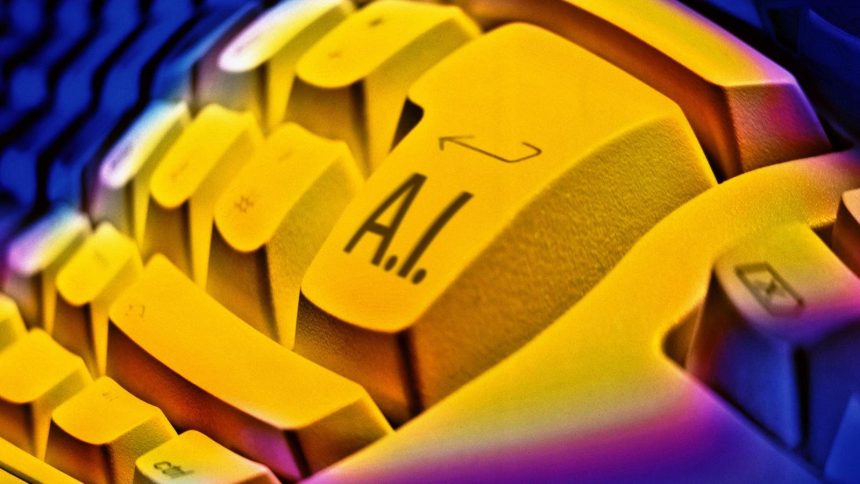In 2000, internet darling Cisco was the world’s most valuable company. Today it’s worth half as much. AI juggernauts like Nvidia and Palantir are driving the tech-bloated S&P 500 today. Buyer beware.
Atthe end of the 1990s, there was one narrative on every stock broker’s lips. The so-called world wide web would change everything about our way of life: the way we buy and sell goods, interact with friends, conduct research and advance our careers. It would be impossible to imagine life without it.
That narrative has come true on a scale beyond what many imagined, but it might not feel that way for the investors who bought into the craze. First there was the crash in March 2000, which ultimately took the stock market down 49%. Even worse, had you held onto the 10 largest tech stocks by market capitalization from the beginning of 2000, all 10 would have lagged the S&P 500 by the end 2015. Fast forward to today, and the only stocks that have pulled ahead of the broader market in that quarter-century span are Microsoft and Oracle. The rest—names like Cisco, Intel, Qualcomm and IBM—have sorely disappointed investors.
It’s a cautionary tale for today’s investors, who have bid prices up on the belief that artificial intelligence will revolutionize the world the same way the internet did. The information technology sector makes up more than 33% of the S&P 500 index, matching the levels of the dotcom bubble of the late 1990s. Semiconductor designer Nvidia alone makes up 8% of the index thanks to its $4.3 trillion market cap, up tenfold in three years. But even if AI is as transformative as most expect, the stocks that have been the biggest beneficiaries thus far may not be winners in the coming decades.
“It’s important to distinguish between the stocks and the companies. These are great companies with great products,” says Rob Arnott, founder and chairman of Newport Beach, California-based investment advisor Research Affiliates. “Bubbles burst not because the story is completely wrong, but because around the margins the story is wrong. The story of the rate of growth, the time horizon of growth, is unrealistically optimistic, and the risk of competition eroding market share is underestimated.”
The S&P 500 is priced at about 30 times earnings today, significantly more expensive than the typical historical average of around 20. The Nasdaq 100 currently has a P/E of 33. At the peak of the dotcom bubble in early 2000, the S&P 500 had a multiple of 34, and the Nasdaq 100 had one over 70. Most of that premium this year has been driven by tech stocks, which are trading at 41 times earnings and nearly 10 times sales as a group in the S&P 500. Nvidia’s P/E multiple is 57, and it’s worth 29 times its $148.5 billion in 12-month sales. Chipmaker Broadcom, which has gained more than 400% since the start of 2023 to surpass a $1 trillion market cap, is priced at 110 times earnings.
The valuations are more baffling for some smaller companies. Shares of Palantir Technologies, which makes software for data mining, have exploded by 2,400% since the start of 2023. Its business has grown to $3.4 billion in sales in the last 12 months, up 39% year over year, and become profitable, but its market value is now more than 100 times that revenue figure. Advanced Micro Devices, another chipmaker that’s risen a hundredfold in the last decade, is priced at 97 times earnings.
Those premiums have continued rising throughout the summer. The S&P 500 is up 30% since April 8, making a 19% tariff-induced plunge earlier in the year a mere blip and quickly reaching new record highs. The Global X Artificial Intelligence & Technology ETF is up 43% in that span. A generation of investors has been taught to “buy the dip” at any sign of trouble and been rewarded for that confidence for 16 years, so despite anxiety over tariffs, inflation and a weakening job market, money keeps flowing in.
“In the early stages, it’s driven by FOMO, a fear of missing out, but as the bubble matures, it’s basically a nervous complacency that pulls people into the market,” says Jim Stack, president and founder of InvesTech Research. “It’s not like they’re expecting big gains, but they just can’t stand not to be in it.”
Theoretically, stock bubbles can resolve themselves gradually over time, with market prices plateauing while fundamentals catch up, but Stack notes that reality typically calls for a hard landing. The only question is when that landing will come. Travis Prentice, chief investment officer of the Informed Momentum Company, which manages $2.4 billion in assets, does own positions in some high-flying tech stocks like Nvidia and Broadcom in his U.S. large cap fund based on their price momentum. He says one warning sign for when to pull the plug would be if the market reacts poorly to an earnings report, even if a company is continuing to beat analyst expectations.
“When a company starts losing momentum and starts losing trend, right at that change point, you want to be moving on,” says Prentice. “If you wait for the fundamentals to totally fall out, it’s usually too late.”
Veteran investors fear that they’ve seen this before. Rather than the “Magnificent Seven” carrying this bull market, the dotcom bubble had the Four Horsemen of Cisco, Intel, Dell and Microsoft. Cisco, then the leading supplier of equipment that served as the plumbing for the internet, was thought to have impenetrable margins and a certain roadmap for meteoric growth, and briefly became the most valuable company in the world. It boasted a market cap of $555 billion in March 2000 and a P/E multiple north of 150. Two years later, 90% of that value was gone. Today, despite tripling its sales in the last 25 years to $57 billion, it’s still only worth half as much as it was at its peak.
Intel is similarly underwater. Dell’s spectacular crash led to a masterful turnaround orchestrated by Michael Dell, but that didn’t help its stockholders who were bought out when he took it private in 2013 at a deep discount from its peak. Microsoft is the lone member of the Four Horsemen that has rewarded investors who held on through a 73% drop through the 2000s, and it took a long time for the payoff.
“There’s a notion that ‘moats’ will protect you, and they might protect you for a couple years,” says Arnott. “But if you’ve got a 50% profit margin, your competitors are going to be doing everything they can to try to find ways to get that high-margin business for themselves.”
Arnott’s preferred approach doesn’t shun the market’s most expensive stocks entirely, but assigns them more rational weights that disregard their market values. His Research Affiliates has $159 billion in assets under management in strategies it has developed and is best known for its RAFI Fundamental Index, which offers an alternative to market cap-weighted indexing. Instead, it weights companies based on their adjusted sales, cash flows, book value and dividends and stock buybacks.
It looks much different and much less concentrated than the S&P 500. Apple carried the highest weight in its U.S. Fundamental Index as of June 30 at 4.1% (still lower than its 5.7% weight as the third-largest S&P 500 constituent), and the tech sector collectively only has a 17% weight. Nvidia makes up less than 1% of the index, while cash flow generating energy firms Exxon Mobil and Chevron are both among the top 10 stocks represented.
The strategy would have outperformed both the S&P 500 and the Russell 1000 Value index favored by stubborn value investors from 1998 to 2003, a period encompassing both the inflation and collapse of the internet bubble, and Arnott expects it will work again. Even if Nvidia is unlikely to crash as hard as Cisco, it will be hard to keep beating the lofty expectations the market has set for the most expensive companies.
“I don’t think it’s in danger of losing 90%,” says Arnott, “but I think it’s in danger of having a total return in the coming decade that’s in the ballpark of zero.”
Nvidia and its peers may well continue to grow their sales and earnings at impressive rates as AI adoption accelerates. But investors don’t have to look too far back historically to be concerned about how much of that growth is already priced in.
More from Forbes
Read the full article here














